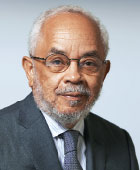Angels and the Pandemic

It has been more than a year since we began living with the COVID-19 pandemic. I assume we marked the anniversary in different ways: through our individualized associations, ruminations about what we missed and what has changed, and thoughts about the transformations in our lives. Some of us may have knelt at a real or virtual altar, satisfied at having made it through and looking cautiously to a future. Others may have complained, because of the pain or from habit. I noticed a tenacious anger at times, in retaliation against COVID’s insistence that it had an unmerciful mind of its own. From the beginning, the virus had made clear that we were not in charge of this rampaging event.
The year was at times oppressive, brutal, even punitive. Despite the turmoil around them, some people maintained an equanimity of spirit. They offered comforting words, made conciliatory gestures, and radiated peace. I admired and celebrated the two women I know who telephoned each other regularly and engaged in mutual prayerful support. There was, too, my younger colleague who invited me to take walks with him on occasion. We discussed all sorts of subjects, enjoyed the human contact, and contemplated how best to continue trying to make this world better.
Thinking about these special individuals led me to private reveries about similar people and places. On one such excursion, I was back in the Army. It was a long time ago, in the early 1960s. I was engaged in research on bubonic plague at the Pasteur Institute in Saigon. It was my job to determine the species of rat that carried the fleas capable of transmitting the disease to humans.
On the institute’s campus, there was a small pavilion that served as a clinic for individuals with another historic ailment, sometimes called the plague of leprosy. In the Old Testament book of Leviticus at Chapter 14, one can find detailed descriptions of the rituals used to deal with this disease and its social implications. I have some familiarity with the architectural concept of the Lazaretto that existed, in my boyhood Barbados, to isolate the individuals diagnosed with leprosy. It was a place not readily visible from the highway. Curiously, I never met anyone who spoke of having been on its inside. I could only imagine, even later as a physician, what might have gone on within this inscrutable place. Much later in my career, I learned the word “banishment” and its connection to these places.
It is hard now to remember how I got to the clinic in Saigon. A work colleague must have introduced me to the physician who ran the consultations. He may have invited me to stop by and make observations about his work. I entered the clinic. The doctor interrupted what he was doing and displayed the broadest and warmest of smiles. Then he presented me to his patient and gently urged us to shake hands. It was the strangest of experiences. The handshake was clearly meant to bring me and the patient together, to conflate our worlds and decrease his isolation. We were connected. I have always thought the doctor was insisting that I bear witness to the patient’s humanity. The holding of hands, the welcome in it, now conjures up the famous line in the New Testament at Matthew, Chapter 26: “Now when Jesus was in Bethany, in the house of Simon the leper, …” One of COVID’s first acts was to force interdiction of touching and assembly.
I never had the time to ferret out how that Vietnamese doctor had come to be of such service, tending to the accursed in a country at war with itself and outsiders. I still see him amid this disease that so many years ago imposed the terror, isolation, and uncertainty that we have been living with for just a year. In an essay I wrote long ago, I referred to people who serve with such generosity as angels. Meeting them is a glorious experience. ■



